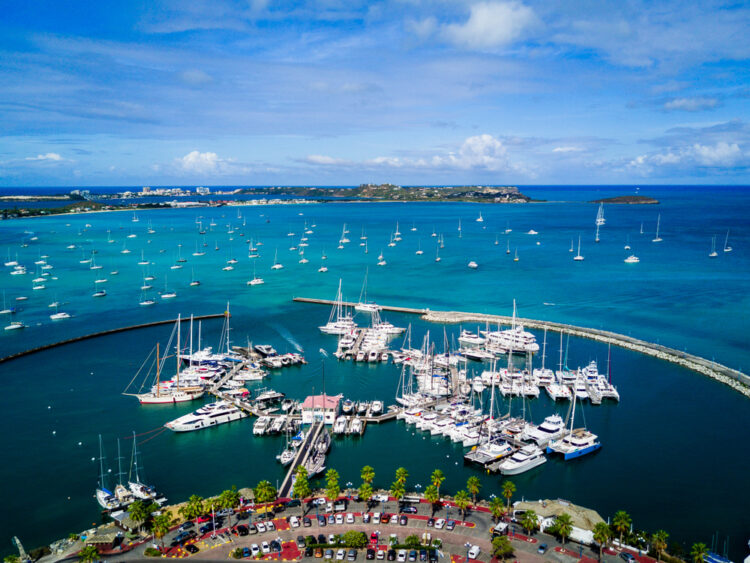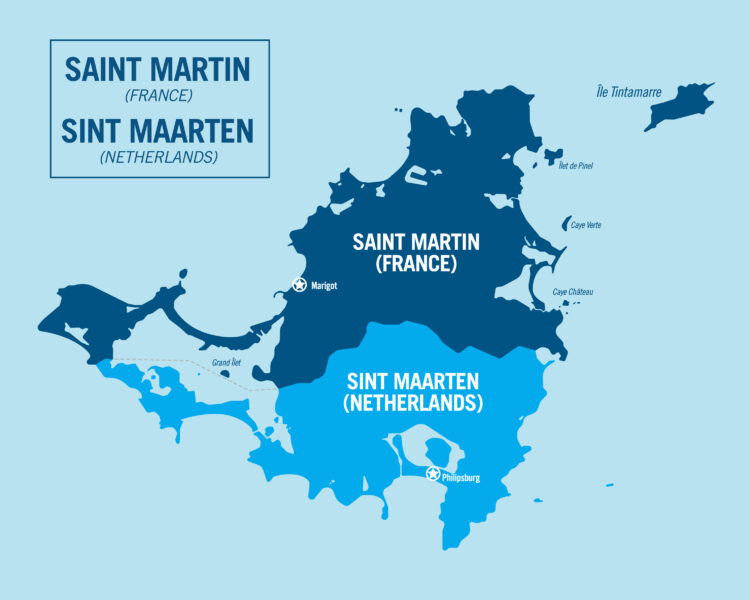Approximately 180 miles east of Puerto Rico lies the island of Saint Martin. This small, 50-square-mile island is divided between two nations: the French Republic in the north and the Kingdom of the Netherlands in the south. The French part, known as the Collectivity of Saint Martin, is an overseas collectivity of France, while the Dutch part, Sint Maarten, is one of the four constituent countries of the Kingdom of the Netherlands.
The division of the island dates back to 1648 when the French and Dutch agreed to partition the island between them. The French part comprises approximately 60% of the island’s total area, while the Dutch part covers the remaining 40%. Despite the French side being larger in size, the Dutch side is more densely populated.
The peaceful coexistence of the two nations on one small island is a fascinating aspect of Saint Martin. The French and Dutch have managed to maintain a harmonious relationship, with both sides respecting each other’s sovereignty and cooperating on various issues. Visitors to the island can easily cross the border between the two sides without any formalities, as there are no physical barriers or border controls.

The relationship between the two governments is generally amicable, with both sides working together on matters of common interest, such as tourism, environmental protection, and security. There have been occasional discussions about the potential unification of the island under a single administration. Proponents of unification argue that it would streamline governance, reduce bureaucracy, and foster greater economic development. Nevertheless, the idea of unification has not gained significant traction, as both sides value their distinct cultural identities and autonomy.
In September 2017, Saint Martin was severely impacted by Hurricane Irma, a powerful Category 5 storm that caused widespread destruction across the Caribbean. The island suffered extensive damage to its infrastructure, including homes, businesses, and public facilities. The tourism industry, which is the backbone of the island’s economy, was hit particularly hard, with many hotels and resorts sustaining significant damage.
In the aftermath of the hurricane, both the French and Dutch governments mobilized resources to support the island’s recovery efforts. Emergency aid, including food, water, and medical supplies, was dispatched to assist the affected population. The international community also rallied to support Saint Martin, with various organizations and countries providing financial assistance and expertise to help rebuild the island.
The road to recovery has been challenging, but the resilience and determination of the island’s residents have been remarkable. Gradually, businesses have reopened, infrastructure has been repaired, and tourists have started returning to the island. While there is still work to be done, Saint Martin has made significant strides in its post-hurricane recovery.

Saint Martin is a popular destination for travelers seeking a unique Caribbean experience. The island’s dual nationality adds a layer of cultural richness and diversity that sets it apart from other Caribbean islands. Visitors can enjoy the best of both worlds, experiencing the charm of French cuisine and sophistication on one side and the vibrant Dutch nightlife and casinos on the other.
One of the main attractions of Saint Martin is its beaches. The island boasts 37 beaches, each with its own unique character and beauty. From Orient Bay on the French side to Mullet Bay on the Dutch side, there is a beach for everyone and sports enthusiasts can indulge in activities such as snorkeling, scuba diving, windsurfing, and kayaking.

As you might expect, Saint Martin offers a wealth of cultural and historical sites to explore. The tourism infrastructure here is as well-developed as on any island in the Caribbean. The French capital, Marigot, is a charming town with colorful buildings, open-air markets, and a picturesque harbor. The Dutch capital, Philipsburg, is known for its duty-free shopping, lively Front Street, and historical landmarks like Fort Amsterdam.
Saint Martin also has several protected areas and nature reserves. The Loterie Farm, located on the French side, is a hillside retreat offering hiking trails, ziplining, and a treetop obstacle course. The Sint Maarten Nature Foundation manages several protected areas, including the Man of War Shoal Marine Park, which is home to a variety of marine life and coral reefs.

Foodies will be delighted by the island’s culinary scene, which naturally blends French, Dutch, and Caribbean influences. From haute cuisine in Grand Case to traditional Creole dishes in local restaurants, there is no shortage of options. The island also hosts several food festivals throughout the year, showcasing the talents of local and international chefs.
The island’s dual nationality also provides a sense of safety and stability, as both the French and Dutch governments are committed to maintaining order and security. Visitors can enjoy peace of mind knowing that they are in a well-regulated and governed destination.
Saint Martin’s location in the heart of the Caribbean makes it an ideal base for exploring other nearby islands. With easy access to air and sea transportation, visitors can embark on day trips or island-hopping adventures to discover the diverse beauty of the region.


